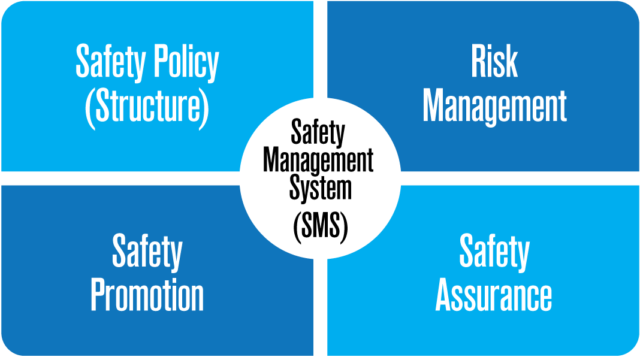
You’ve acquired a wonderful and functional aircraft for your business and personal travel. You’ve hired a professional flight crew and a maintenance team. You’ve provided a comfortable home for your new flight department. You have every reason to expect that they will get you where you need to go, safely and on time. But how can you ensure that your team’s understanding of “safely and on time” is the same as yours?
Occasionally, those two objectives are in conflict. Corporate aviation owners and operators have much more leeway than the commercial airlines do in determining how to operate the aircraft within their own tolerance for risk. For example, under Federal Aviation Regulations (FAR Part 91, applicable to private, or non-commercial aviation), there are no rules governing minimum weather conditions for takeoff, crew duty time and rest periods, or training requirements beyond basic currency standards. Without specific guidance from the owner, the crew’s tolerance for risk may differ from yours, possibly leaving you frustrated — or scared.
In today’s business aviation world, these questions typically are resolved in the preparation and approval of a Flight Operations Manual (FOM). The modern FOM covers virtually every aspect of flight department management and operation, from dress codes to Standard Operating Procedures (SOPs). While it is best prepared by the lead aviation professional, it is important that the owner understand and approve its basic principles. When it appears necessary to delay or cancel a planned flight, it’s best that the owner and the flight department manager are on the same page.
In the past decade, aviation safety management has taken an evolutionary leap with development of the Safety Management System (SMS). Before, safety management was the assumed responsibility of the flight department manager or safety manager. Safety programs often consisted of a poster on the wall and a quarterly all-hands meeting. Under SMS, a systems approach is used to manage the safety program. (SMS has been called the aviation equivalent of ISO 9000.) Specific hazards are identified prior to or at the time they are encountered; associated risk is assessed and, where necessary, mitigated; collected data are analyzed to identify trends or conditions that otherwise would be overlooked. Importantly – even more so than with the FOM – it is critical that the aircraft owner support the SMS as a high priority. Yes, you want to arrive at your destination on time, but only if you can do so safely.
The SMS model developed by the International Civil Aviation Organization (ICAO), and supported by both regulators and aviation organizations, consists of four primary elements: Safety Policy, Risk Management, Safety Promotion, and Safety Assurance, and several related features. While strictly structured, the SMS model is flexible enough to allow for application by every operator, large or small.
In addition to safety concerns for yourself, your passengers, and your aircraft, other influences drive the adoption of an SMS:
- Unlike for commercial airlines and charter operators, at this time there is no regulatory requirement for business aviation to have a certified SMS in place, except in some international locales. However, as SMS rapidly is becoming an industry standard, it has been adopted voluntarily by more than 700 flight departments worldwide. It is expected that nations subscribing to the International Standard for Business Aviation Operations (IS-BAO) eventually will mandate an SMS.
- Aviation insurers — who see the safety value in SMS – are rewarding SMS adopters with significant premium discounts.Finally, prominent aviation attorneys are voicing concerns about the liability implications of not adopting SMS, as it becomes the expected way of doing business – endorsed and encouraged by the FAA, National Transportation Safety Board, National Business Aviation Association, and others. Should an accident occur to an operator without an SMS, plaintiff attorneys may represent that as substandard performance, which could have a strong impact on a jury.
Consider your safety, business, regulatory, and legal reasons for SMS. Make certain that your pilots and maintenance technicians understand, agree with, and implement your operational priority: a safe arrival. BAA
Robert J. Conyers is an Airline Transport Pilot (ATP) and Certified Flight Instructor (CFI). He came to Baldwin Aviation from Global Aerospace where he had served for more than two decades, most recently as Manager of General Aviation Safety.




